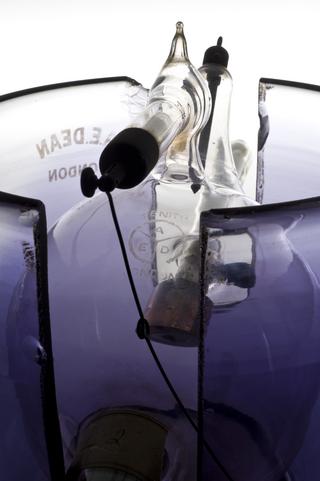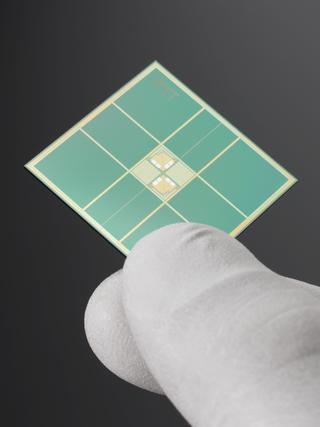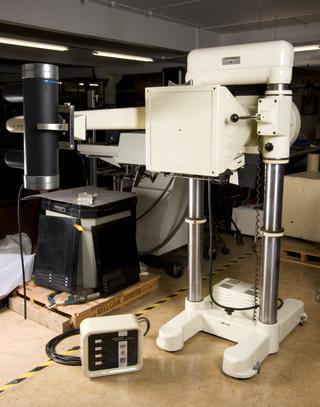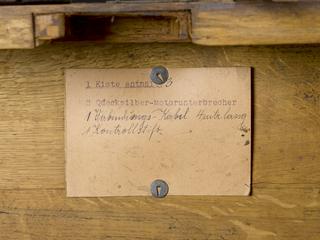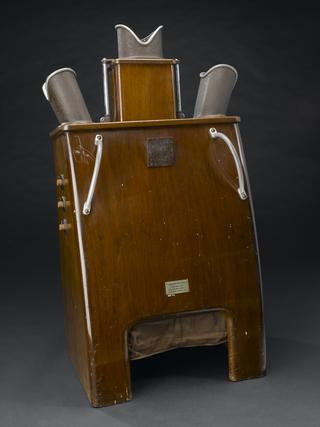


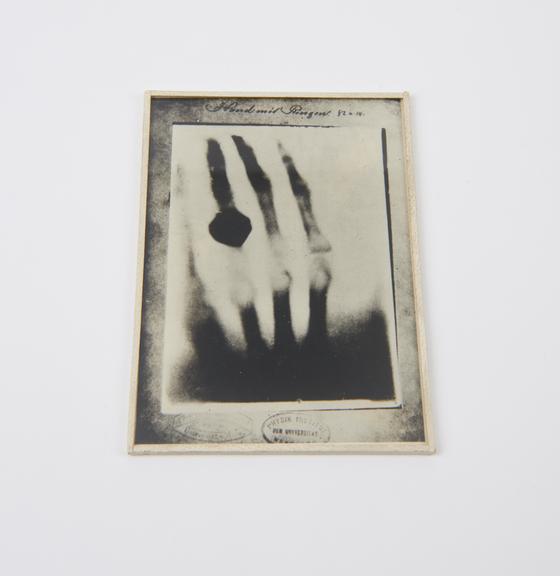
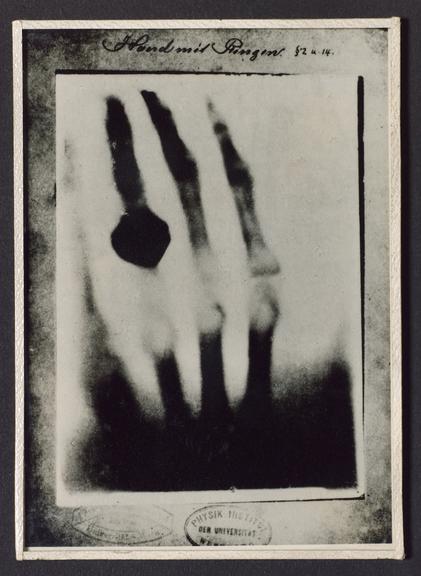
Photograph of a radiograph of a hand, covered with glass, taken by Roentgen, Wurzburg, Germany, 1895
Wilhelm Conrad Röntgen (1845-1923), a German physicist, discovered x-rays in 1895. This is a photograph of a radiograph (an x-ray negative) taken by Röntgen on 22 December 1895. It shows his wife’s left hand; she is wearing a ring. The original radiograph is at the Deutsches Museum in Munich, Germany.
X-rays were quickly taken up by physicians to look inside the body without resorting to surgery. By the 1930s, most hospitals in the United Kingdom had specialist x-ray departments and equipment.
Details
- Category:
- Radiomedicine
- Collection:
- Sir Henry Wellcome's Museum Collection
- Object Number:
- A606881
- Measurements:
-
overall: 112 mm x 81 mm x 2 mm,
- type:
- photograph
